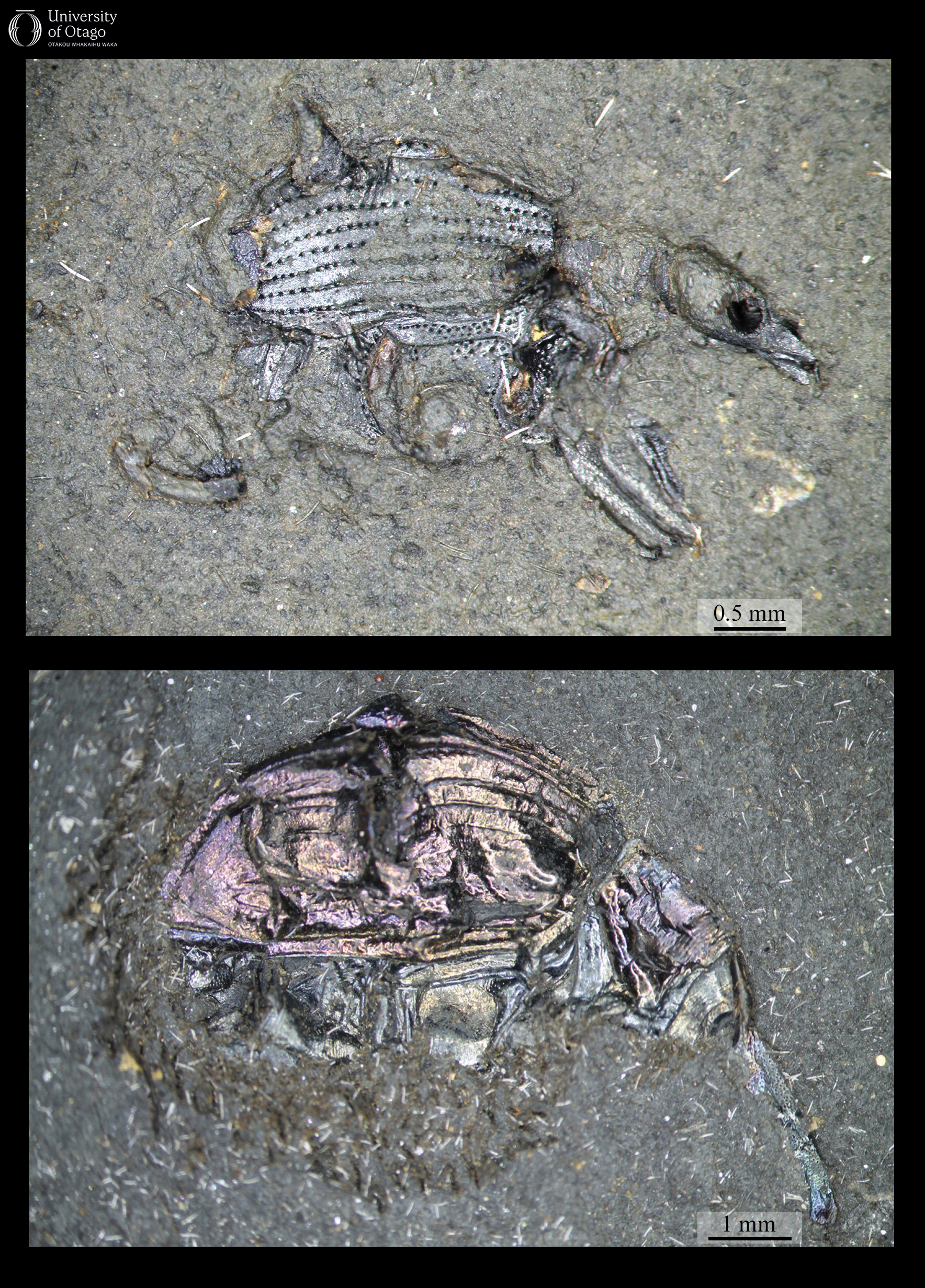54 Long-snouted weevils from ancient volcanic fields
Arthropoda, Coleoptera, Curculionidae
Beetles (Coleoptera) are the most common insect fossils found in the Hindon Maar Complex, making up 70% of the 250 insect fossils found so far in small excavations in the maar lake deposits near Hindon, 30 km west of Ōtepoti Dunedin. Of these, small weevils are the most abundant kinds of beetles in the black carbonaceous sediments. Easily recognised by their elongated snouts, most of the weevils are preserved as laterally compressed specimens (lying on their sides). This happened because their stout, rounded long-legged bodies tipped over on their sides as they sank through the water column to lie on the lakebed.
|
Two examples of fossil weevil collected from Hindon Maar. The upper image shows specimen OU 45421 and the lower image shows specimen OU 45429. The exceptional level of preservation allows us to see fine details like tiny pits and grooves on the carapace (external skeleton). Image credit: U Kaulfuss. |
Several kinds of spined weevils are present, some closely related to endemic modern genera (found only in New Zealand). Many specimens such as these two examples are almost three-dimensional, with fine details of ornamentation and sometimes structural colour still present.
Weevils are mostly herbivores, often closely associated with just a few plant types. Their abundance at Hindon and Foulden maars indicate that they were ecologically important components of forest ecosystems in early and mid Miocene forests in Aotearoa, just as they are today. Other insects found at Hindon include a cicada wing (Tettigarcta), a damselfly, jumping plantlice, stinkbugs, wasps, ants, and, most recently, a bee.
—Written by Daphne E Lee and Uwe Kaulfuss
| Specimen numbers: OU 45421 and OU 45429 | Age: 14.6 million years ago (middle Miocene, Lillburnian stage) |
| Locality: Hindon, Otago | Rock Formation: Dunstan Formation |
| Collected by: U Kaulfuss | |
| Citation: Kaulfuss U, Lee DE, Wartho J-A, Bowie E, Lindqvist JK, Conran JG, Bannister JM, Mildenhall DC, Kennedy EM, Gorman AR. 2018. Geology and palaeontology of the Hindon Maar Complex: a Miocene terrestrial fossil Lagerstätte in southern New Zealand. Palaeogeography, Palaeoclimatology, Palaeoecology 500:52–68. doi.org/10.1016/j.palaeo.2018.03.022 | |


